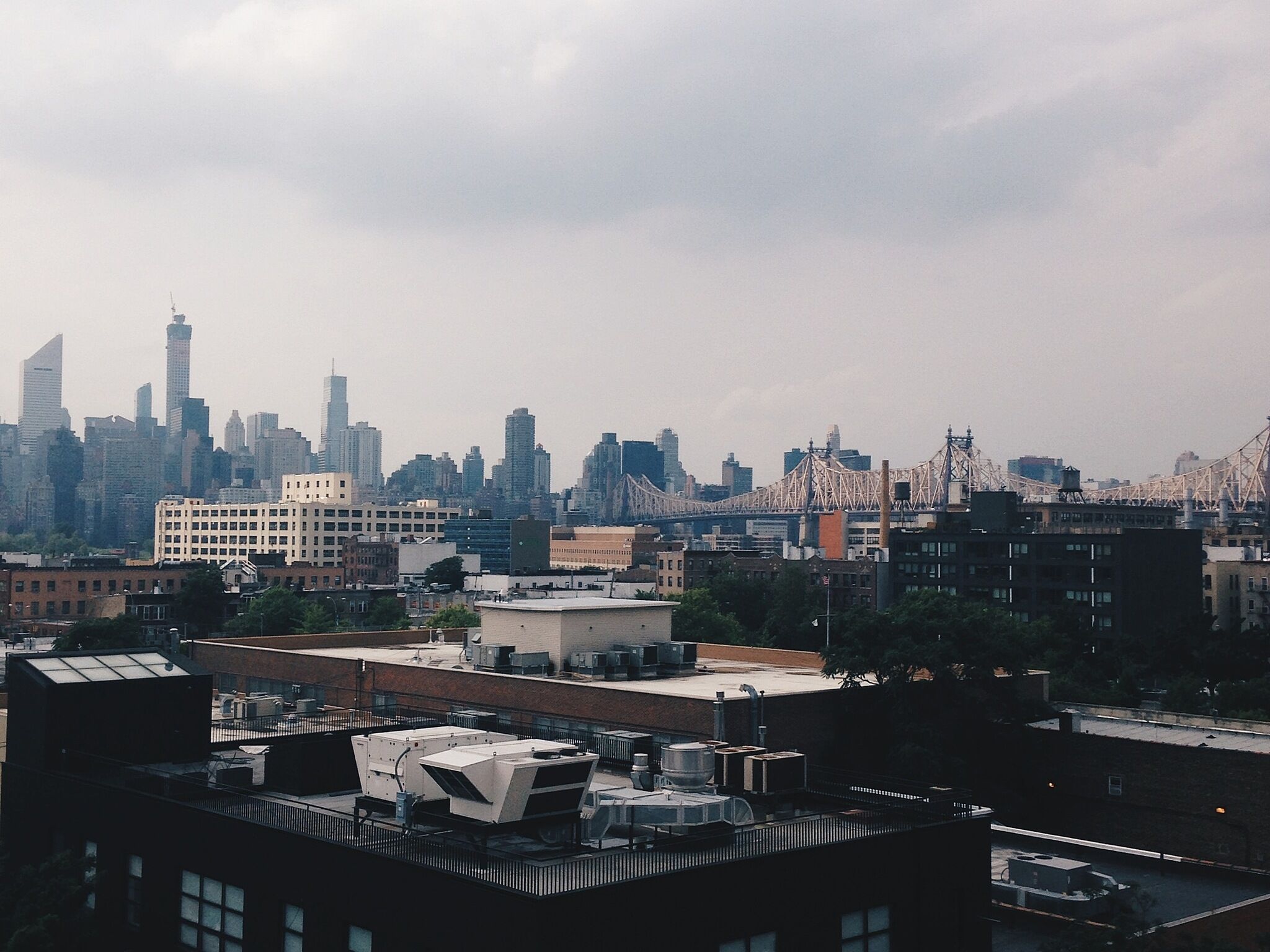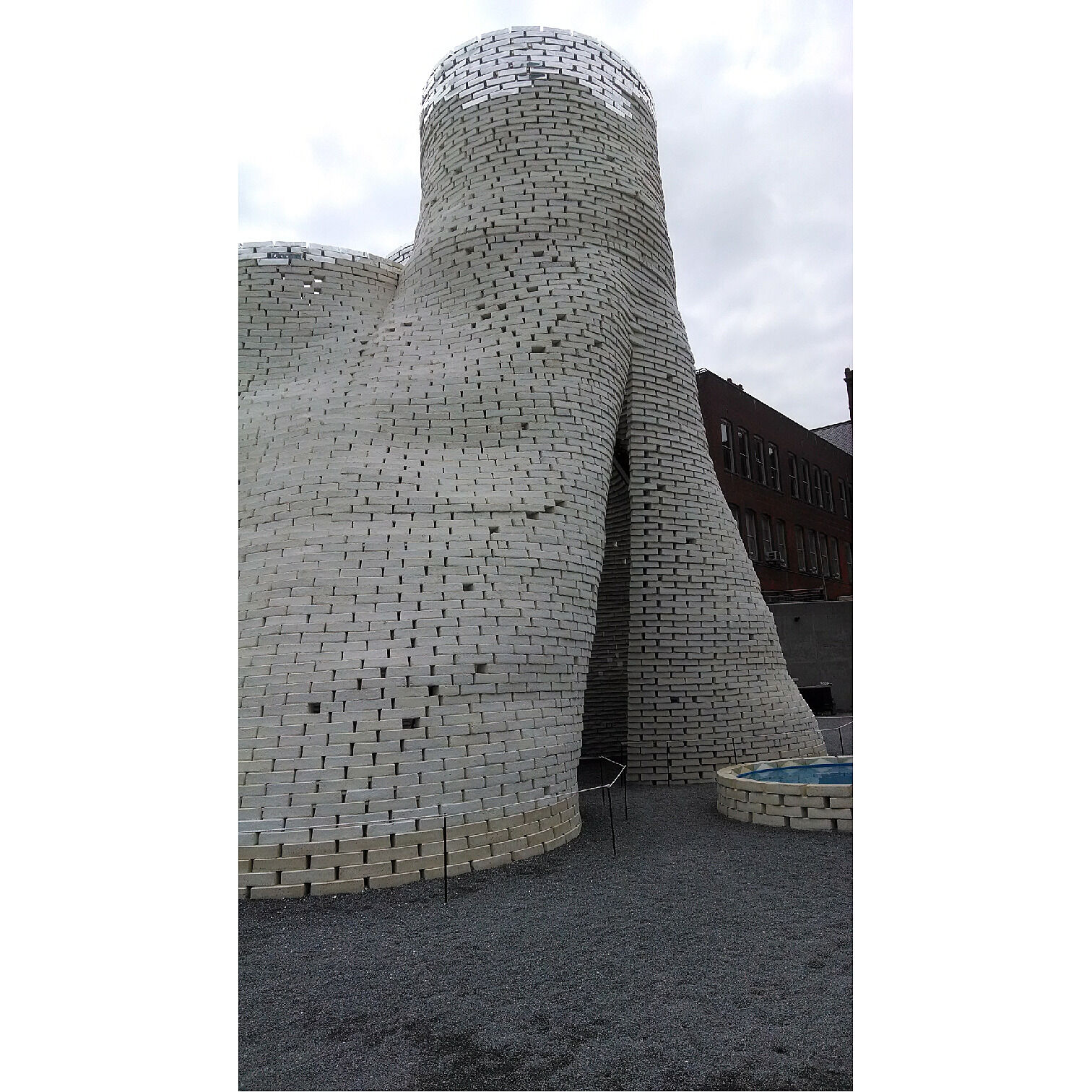YI Summer: PS1
Jul 14, 2015
On July 14, Youth Insights visited MoMA PS1 in Long Island City, Queens. We crossed the courtyard, in awe of the new architectural structure there, to meet our tour guide, Manager of Visitor Services Zachary Bowman. We followed him down to the basement of the building where we entered an eccentric-looking boiler room. The boiler itself was partially gilded and we learned that it was in fact an art piece by Saul Melman. We learned about the alchemical process Melman used on the boiler and about Bowman’s job at the museum. He told us that there are major differences between large institutions and smaller institutions and that one job title may mean an array of different things depending upon where you work.
Next we headed up to the second floor to see the retrospective exhibition James Lee Byars: ½ an Autobiography. We entered a serene, dark room that held sculptures strategically placed and lit. The installation was titled Five Points Make a Man (1993). In the darkness Byars’s gilded works seemed luminescent and almost divine. Among these pieces was a gold cube that, depending on your angle of viewing, seemed to fade into the red drapery surrounding it. The lighting in this room truly created a mystifying atmosphere and removed us from the outside world for a moment.
The next piece by Byars was ominously titled The Ghost of James Lee Byars (1969). Here we entered into a pitch-black room filled with other museum visitors bumping into each other and attempting to determine their location in the room. As a group we stuck close together for fear of getting lost. Juliana, a fellow YI participant, commented that because the room felt infinite it seemed that it could be the afterlife that Byars imagines for his ghost. We all agreed that the room was very thought provoking and exciting.
We then headed back out to the courtyard where we sought refuge from the summer heat under the structure designed by architect David Benjamin’s firm, The Living. We learned about the structure and what it was made out of: the white bricks that form three cylindrical towers are made from a fully compostable material that is a combination of fungus and corn stalks. The metal bricks that trim the tops of the towers are actually the molds that were used to make the white bricks. A few sample bricks were passed around and we were able to feel how lightweight they are and smell the unique organic odor they emit.
Our time spent with the structure was the last stop on our tour. We made our way back to the galleries to explore the museum for ourselves. Most of us headed up to the “edible” rooftop garden which recently opened. The garden is filled with herbs and spices as well as a small café that has amazing views of the New York City skyline. Back in the galleries, we admired vibrant and poignant paintings by German artists Christoph Schlingenseif and Maria Lassing. After experiencing a terrific tour and these wonderful exhibitions, we left MoMA PS1 with a greater understanding of the art on view.
By Holly, YI Summer Participant


